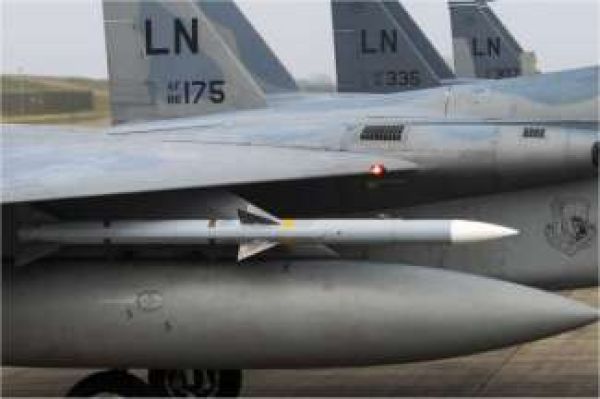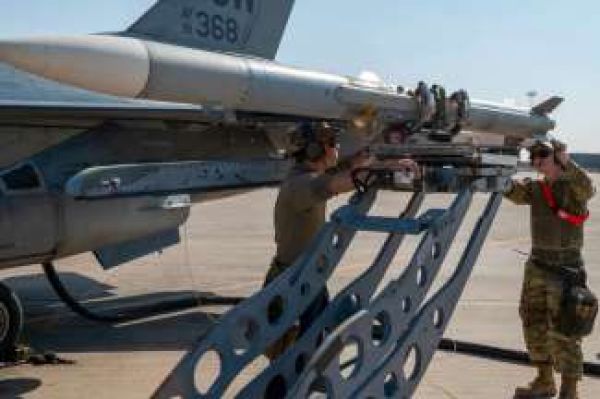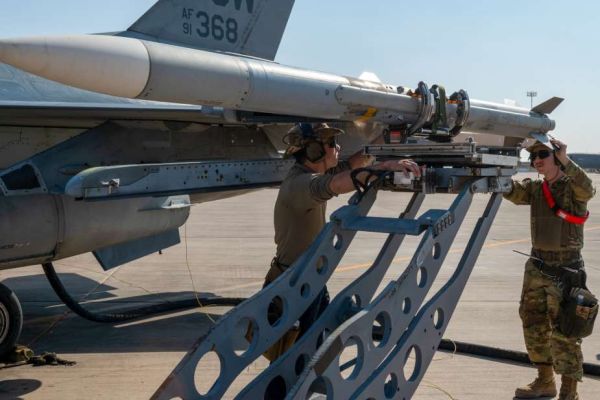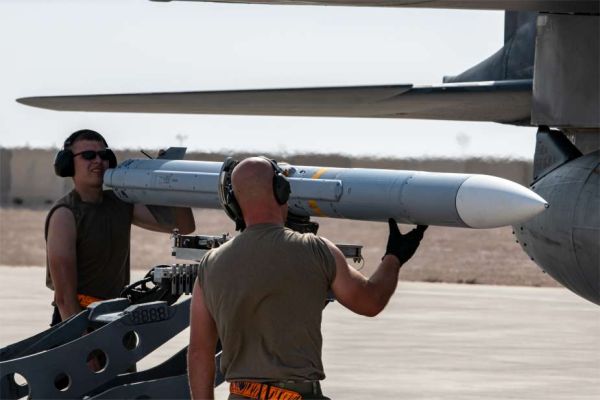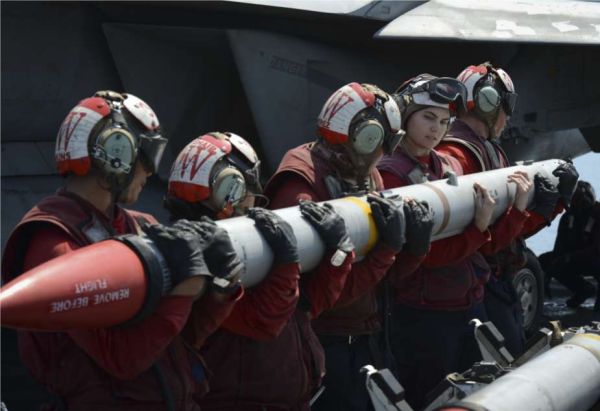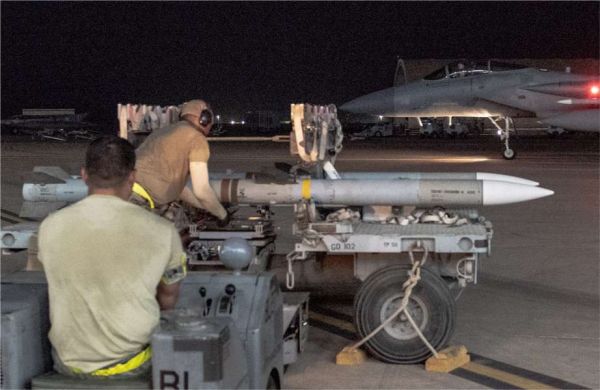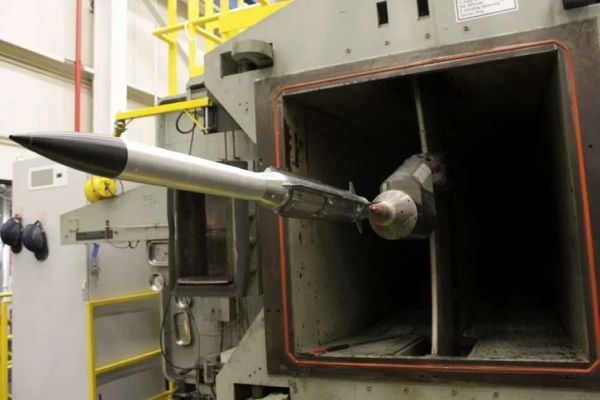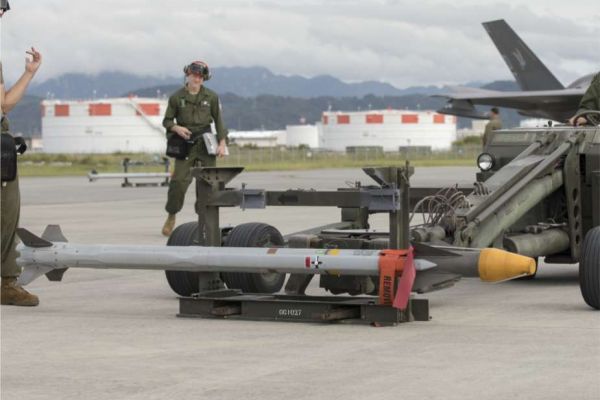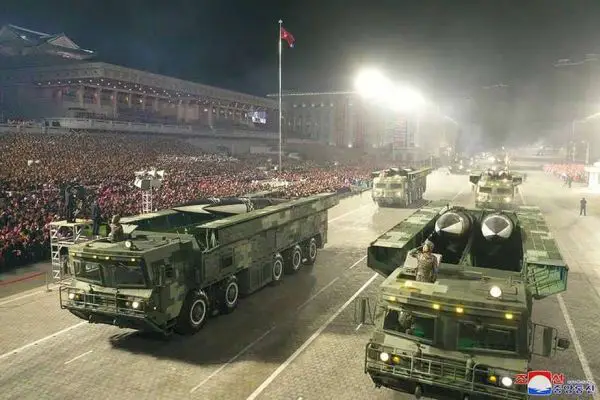Tactical Missiles.
AMRAAM AIM-120 Air-to-Air Missile.
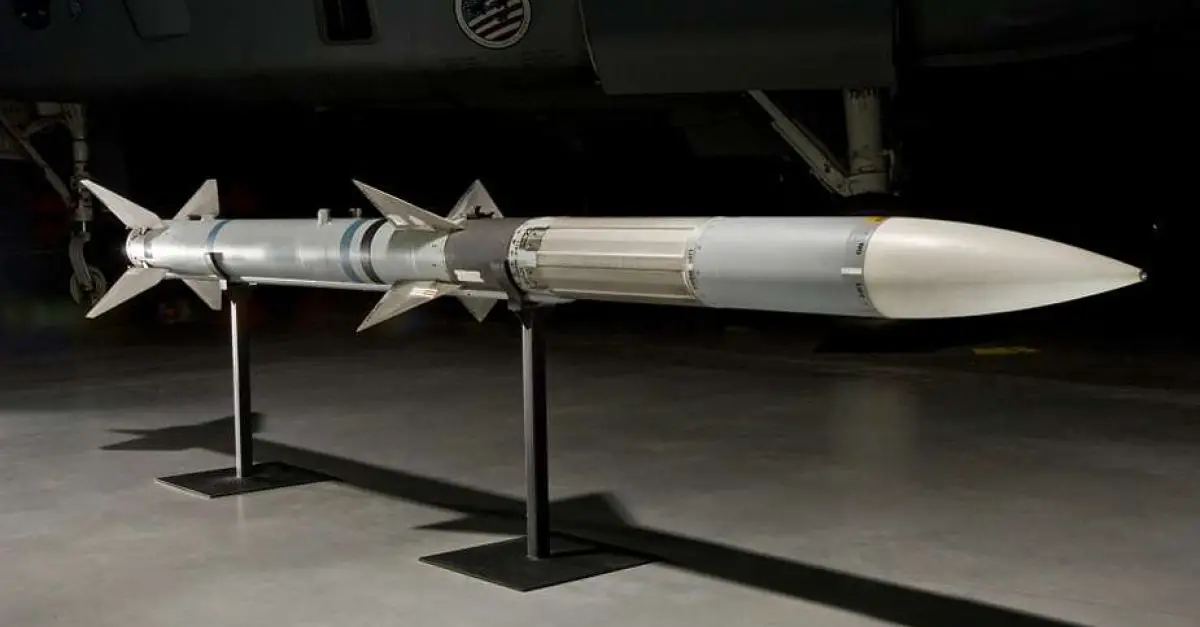
The AIM-120 Advanced Medium-Range Air-to-Air Tactical Missile (AMRAAM) is a highly advanced beyond-visual-range air-to-air missile (BVR AAM) with surface-to-air missile (SAM) capabilities. Developed to engage and destroy enemy aircraft at extended ranges, the AIM-120 has become a cornerstone of modern air combat. Renowned for its precision, reliability, and combat effectiveness, the AIM-120 plays a critical role in ensuring air superiority across various military platforms. This missile has seen extensive combat use and remains in service today.
Country users: United States, Canada, United Kingdom, Germany, France, Italy, Spain, Netherlands, Norway, Denmark, Belgium, Greece, Poland, Turkey, Portugal, Finland, Sweden, Czech Republic, Romania, Hungary, Croatia, Japan, Australia, South Korea, Singapore, Malaysia, Indonesia, New Zealand, Taiwan, Israel, Saudi Arabia, United Arab Emirates, Qatar, Kuwait, Oman, Jordan, Morocco, Egypt, Chile.
Description
The AIM-120 Advanced Medium-Range Air-to-Air Missile (AMRAAM) was developed by Raytheon Technologies, one of the leading U.S. defense contractors, known for its expertise in advanced missile systems. Originally manufactured by Hughes from 1991 to 1997, Raytheon took over production thereafter. Development of the AIM-120 began in the late 1970s to replace the AIM-7 Sparrow, with the first operational deployment occurring in September 1991.
The AIM-120 is employed by over 35 countries, including key U.S. allies in NATO, the Asia-Pacific region, and the Middle East. Notable users include the United States, United Kingdom, Japan, Australia, and several NATO member countries. The missile's primary role is to achieve air superiority by engaging and destroying enemy fighters, bombers, and cruise missiles from beyond visual range. It can be launched from a variety of platforms, including fighter jets, ground-based air defense systems, and naval vessels.
The AIM-120 has been combat-proven in numerous conflicts, starting with its use in the Gulf War. It has also seen action in the Bosnian War, Kosovo War, Syrian Civil War, Russo-Ukrainian War, the Russian invasion of Ukraine, the Yemeni Civil War, and the Saudi-led intervention in Yemen. Its combat success rate underscores its effectiveness in modern warfare.
The AIM-120 is an ongoing program with a unit cost of approximately $1,090,000 as of the AIM-120D variant in Fiscal Year 2019. Several variants of the missile have been developed, including the AIM-120A, AIM-120B, AIM-120C, AIM-120D, and the extended-range AMRAAM-ER.
on March 30, 2025, Japan and the United States have announced the early launch of a joint coproduction program for the AIM-120 Advanced Medium-Range Air-to-Air Missile (AMRAAM). The announcement was made during a meeting in Tokyo between U.S. Defense Secretary Pete Hegseth and Japanese Defense Minister Gen Nakatani.
AMRAAM AIM-120 variants:
- AIM-120A:
The AIM-120A is the original production variant of the AMRAAM, introduced in the early 1990s. It was designed to replace the AIM-7 Sparrow and features basic active radar homing and solid-fuel rocket propulsion. The AIM-120A set the foundation for subsequent improvements and was primarily used by U.S. and NATO forces.
- AIM-120B:
The AIM-120B is an upgraded version of the AIM-120A, incorporating improved electronics and software. These enhancements increased the missile's reliability and resistance to electronic countermeasures (ECM). The AIM-120B also features a more advanced inertial navigation system, providing better mid-course guidance and target engagement capabilities.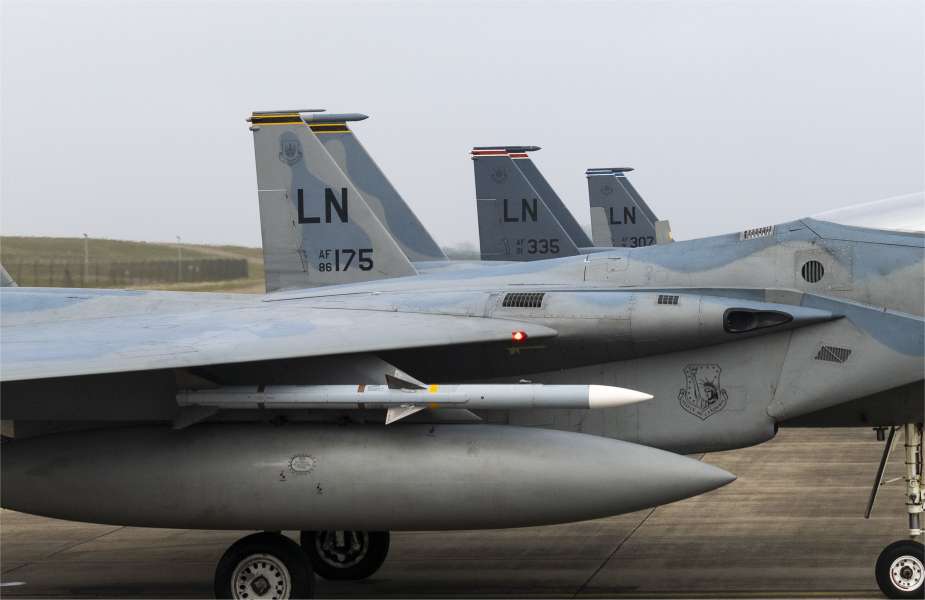
- AIM-120C:
The AIM-120C series introduced significant design changes to enhance performance. The AIM-120C features smaller control surfaces (fins) compared to earlier versions, allowing for internal carriage in the weapons bays of aircraft like the F-22 Raptor. This variant also boasts improved kinematics, increased range, and better overall maneuverability. The AIM-120C series includes several sub-variants, each with incremental improvements in range, guidance, and warhead effectiveness:
- AIM-120C-3/4: Early C-model variants with improved electronics and range.
- AIM-120C-5: Increased range and improved guidance systems.
- AIM-120C-6: Enhanced warhead lethality and improved electronic counter-countermeasures (ECCM).
- AIM-120C-7:
Further improved guidance system, extended range, and better resistance to jamming.- AIM-120D:
The AIM-120D represents the latest and most advanced variant of the AMRAAM. It offers substantial improvements over the AIM-120C series, including a significantly extended range, enhanced guidance accuracy, and a two-way data link for mid-course updates. The AIM-120D also features improved kinematics, making it more capable of engaging highly maneuverable targets. Additionally, it has better ECCM capabilities and greater situational awareness through networked data sharing. The AIM-120D is currently in production and service with U.S. and allied forces.
- AIM-120C-8: the most advanced operational variant of the AMRAAM missile family, offering significantly extended range—estimated over 160 km—enhanced active radar seeker accuracy, and a two-way data link for mid-course target updates. Designed to perform in high-threat, electronically contested environments, it features improved electronic counter-countermeasures (ECCM) and is optimized for engaging fast, maneuverable, and low-signature targets beyond visual range. Its compact, clipped-fin design ensures compatibility with internal bays of stealth aircraft and external hardpoints of fighters like the F-15 and Eurofighter Typhoon, making it a premier air-to-air weapon for modern combat scenarios.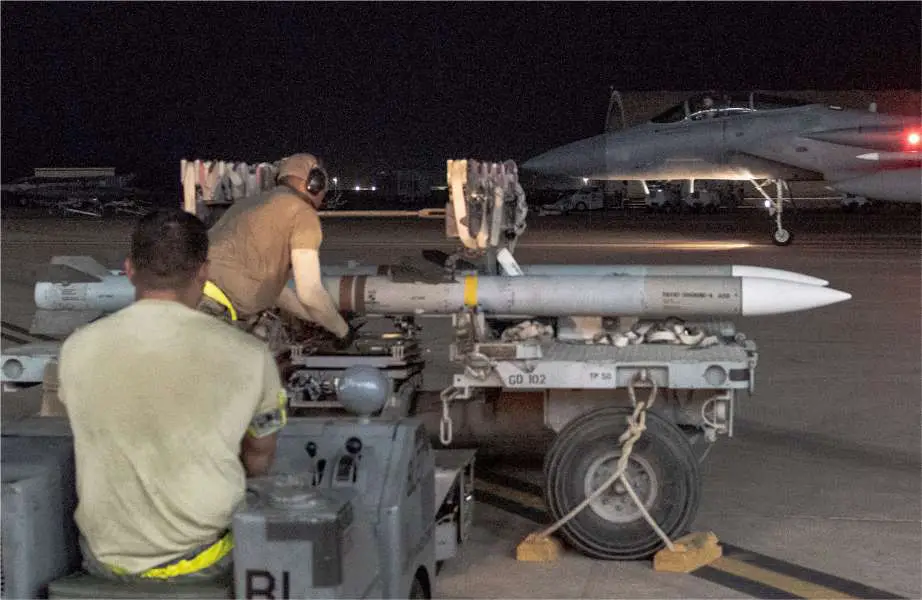
- AMRAAM-ER (Extended Range):
The AMRAAM-ER is a ground-launched variant designed to extend the range and altitude capabilities of the missile when used in surface-to-air missile (SAM) systems. It combines the guidance and warhead of the AIM-120D with a larger rocket motor, significantly increasing its range and performance against aerial threats. The AMRAAM-ER is intended for use in ground-based air defense systems like the NASAMS (National Advanced Surface-to-Air Missile System).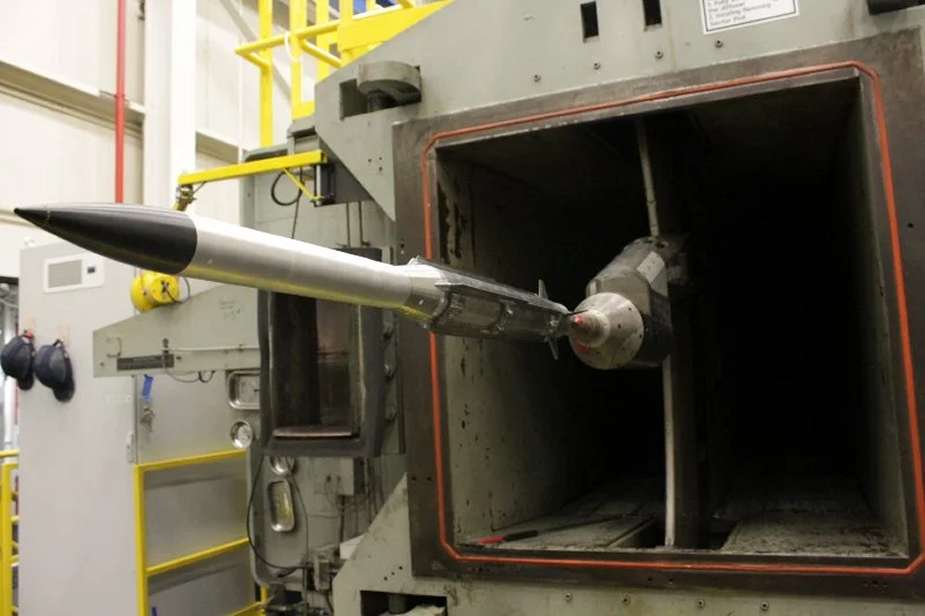
Technical Data
-
Design
The AMRAAM AIM-120 is designed with a sleek, cylindrical body optimized for aerodynamics and high-speed maneuverability. The missile measures 3.65 meters (12 feet) in length, with a diameter of 178 millimeters (7 inches) and a wingspan of 484 millimeters (1 foot 7 inches). It has a mass of 161.5 kilograms (356 pounds), depending on the variant. The missile features four cropped delta wings for lift and four control fins at the rear for steering. The AIM-120C-5/6/7 variants are capable of withstanding up to 40G maximum overload, providing exceptional maneuverability during flight.
-
Warhead
The AMRAAM AIM-120 is equipped with a high-explosive blast-fragmentation warhead designed to maximize damage upon detonation. The warhead weighs approximately 20 kilograms (44 pounds) and is triggered by a combination of the FZU-49 proximity fuse and an impact fuse system, ensuring effective engagement of aerial targets.
-
Propulsion
The missile is powered by a solid-fuel rocket motor, which propels it to supersonic speeds. This propulsion system allows the AIM-120 to reach speeds of up to Mach 4 (approximately 4,501 feet per second or 1,372 meters per second), enabling it to intercept and destroy targets at long ranges.
-
Guidance System
The AMRAAM AIM-120 utilizes a sophisticated guidance system that includes inertial guidance for the mid-course phase and terminal active radar homing for the final approach to the target. The missile also supports optional mid-course update data links, which enhance its accuracy by refining its trajectory during flight. This guidance system provides "fire-and-forget" capability, allowing the launching aircraft to disengage and focus on other threats.
-
Combat Use
In combat, the AMRAAM AIM-120 is deployed against a wide range of aerial threats, including fighters, bombers, and cruise missiles. The missile's ability to engage targets beyond visual range, combined with its high speed, agility, and advanced guidance systems, makes it highly effective in modern air combat scenarios. Its operational range varies by variant, with the AIM-120C-5/6/7 having an effective range of 105 to 120 kilometers (57 to 65 nautical miles), and the AIM-120D extending this range to between 160 and 180 kilometers (86 to 97 nautical miles). The missile's combat-proven track record in multiple conflicts highlights its crucial role in achieving and maintaining air superiority in various operational theaters.
Specifications
-
Type
Air-to-air tactical missile
-
Country users
United States, Canada, United Kingdom, Germany, France, Italy, Spain, Netherlands, Norway, Denmark, Belgium, Greece, Poland, Turkey, Portugal, Finland, Sweden, Czech Republic, Romania, Hungary, Croatia, Japan, Australia, South Korea, Singapore, Malaysia, Indonesia, New Zealand, Taiwan, Israel, Saudi Arabia, United Arab Emirates, Qatar, Kuwait, Oman, Jordan, Morocco, Egypt, Chile.
-
Designer Country
United States
-
Propulsion
Solid-fuel rocket motor
-
Launch Weight
150.75 kg
-
Range Missile
around 32 km
-
Speed Missile
Supersonic
-
Aircraft Launcher
F-15 Eagle, F-16 Fighting Falcon, F/A-18 Hornet/Super Hornet, F-22 Raptor, F-35 Lightning II, Eurofighter Typhoon, Dassault Rafale, Saab JAS 39 Gripen, McDonnell Douglas AV-8B Harrier II, Boeing EA-18G Growler, Panavia Tornado, Mikoyan MiG-29 (with NATO upgrades), Boeing P-8 Poseidon, Boeing F-15EX Eagle II.
-
Guidance System
Inertial navigation for mid-course flight with terminal active radar homing for precise target tracking in the final phase
-
Dimensions
Length: 3.65 m; Diameter: 0.178 m; Wingspan: 0.53 m
























